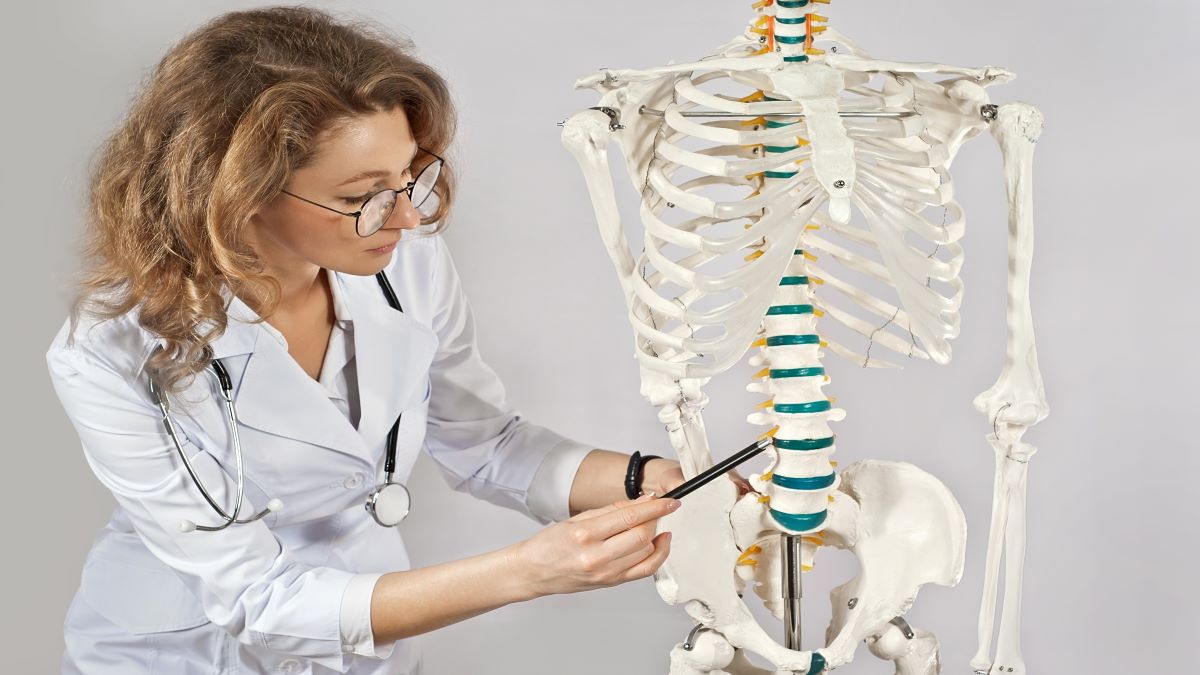Vertebral osteomyelitis is an infection of the vertebral body. It is a relatively rare cause of back pain, especially in young, healthy adults. According to the statistics, the incidence of vertebral osteomyelitis is 2.4 cases per 100,000 people.
Mechanism of infection
Generally, the infection spreads to the vertebral body by a blood vessel. Lower spine veins (Batson’s plexus) drain the pelvis and provide a direct entry path for the bacteria to invade the vertebral column. Therefore, there is a risk that an infection in the spine may develop after a urological procedure. In addition, there is an increasing incidence of spinal infections due to intravenous drug abuse.
Vertebral osteomyelitis causes
Vertebral osteomyelitis often results from bacterial seeding of the bloodstream, direct injection during spinal surgery, or contiguous spread following an infection in adjacent soft tissue. Microorganisms that are the most common causes of vertebral osteomyelitis include:
- Staphylococcus aureus (causes pyogenic vertebral osteomyelitis)
- E. coli (causes pyogenic vertebral osteomyelitis)
- Coagulase-negative staphylococci (cause exogenous vertebral osteomyelitis)
- Propionibacterium acnes (causes exogenous vertebral osteomyelitis)
- Mycobacterium Tuberculosis (common organism and cause of spinal infections in poverty-stricken countries)
However, in the case of prolonged bacterial blood infection, low-virulence pathogens can cause vertebral osteomyelitis. Clarifying, virulence is the ability of the microorganism to cause the disease. There was a study conducted that involved 253 participants with vertebral osteomyelitis. It found that in more than half of patients, the primary focus of infection was:
- urinary tract
- skin
- soft tissue
- a site of access to the blood vessels
- endocarditis (inflammation of the inner lining of chambers and valves in the heart)
- bursitis (inflammation of the tiny, fluid-filled sacs that cushion the bones, tendons, and muscles near the joints)
- septic arthritis
Most patients with hematogenous pyogenic vertebral osteomyelitis have underlying medical diseases. They may include:
- diabetes
- coronary heart disease
- immunosuppressive disorders
- cancer
- renal failure requiring hemodialysis.
In addition, patients who use intravenous drugs fall into this group.
Vertebral osteomyelitis risk factors
There is a group of factors that increase the risk of vertebral osteomyelitis development. Patients at higher risk include:
- Elderly people
- Intravenous drug users
- Immunocompromised individuals. Conditions that weaken the immune system include:
- Prolonged treatment with steroids for conditions such as rheumatoid arthritis
- Insulin Dependent Diabetes Mellitus
- Patients undergoing organ transplants
- Acquired Immune Deficiency Syndrome (AIDS)
- Malnourished patients
- Cancer
Vertebral osteomyelitis symptoms
Common symptoms of vertebral osteomyelitis may include:
- back pain (most commonly in the lumbar spine followed by the thoracic and cervical regions)
- fever
- neurological impairments (including weakness, sensory loss, and radiculopathy)
- tenderness of the spine when percussion applied
- symptoms of initial infection (since it is a source of vertebral osteomyelitis)
Vertebral osteomyelitis complications
If left without proper management, vertebral osteomyelitis can develop complications. They may include:
- direct bacterial seeding in different compartments, resulting in paravertebral, epidural, or psoas abscesses
- motor weakness or paralysis (high rates in patients with cervical vertebral osteomyelitis)
- neurologic complications
In addition, an analysis of 14 case series found that vertebral osteomyelitis was followed by relapse in 8% of the cases. Furthermore, it resulted in death in 6%.
Click Here to read about treatment.
















Leave a Reply
You must be logged in to post a comment.